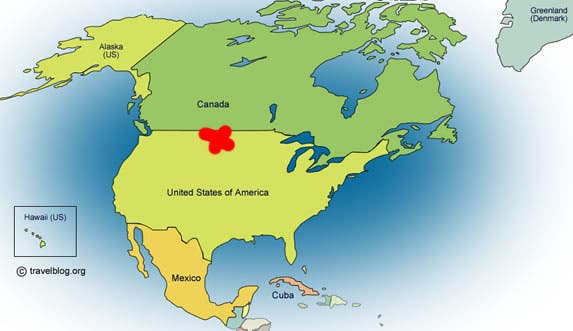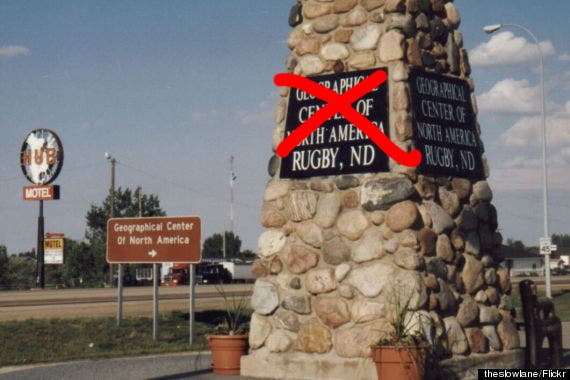Peter Rogerson, a professor of geography at the University at Buffalo in New York, claims he’s found North America’s bull’s eye. According to his calculations based on a novel method Rogerson developed, the center of the continent lies in a North Dakota town called Center. The town’s 570 people residents now have a reason to rejoice for few can boast they live in the very heart of the continent.
Balancing North America on the tip of a needle
Since the 1930s, geologists from the U.S. Geological Survey (USGS) have tried to establish the continent’s center with limited success. Beyond the technical challenges, it wasn’t always clear how to draw the boundaries of the continent. Should we take into account only the landmass of North America or also its islands? What method should we use?
In a 1964 report, the USGS seemed to have completely given up after it stated: “There is no generally accepted definition of geographic center, and no completely satisfactory method for determining it.” The USGS isn’t alone either. Many distinguished researchers echoed much of the same sentiment, but that didn’t keep Rogerson from trying.
“There are all these people out there saying, ‘There’s no real good way to do this,’” says Rogerson, a SUNY Distinguished Professor of geography in UB’s College of Arts and Sciences. “As a geographer, my feeling is that if we want to come up with a good way of defining a center, we can and we should.”
One early method of establishing a geographic center involved balancing a cardboard cutout of a region on the tip of a needle-like point. Some might find this funny, but I actually think it’s very ingenious. We can all agree, however, that it can’t be accurate when attempting to find the center of a continent with confidence.
This is one of the reasons why the center of North America was moved by the USGS from Rugby, North Dakota (population 2,900), which was initially given the crown in 1931, to a small lake 20 miles southwest of Rugby in 1995. Suffice to say, the residents of Rugby were not happy at all having lost a sense of civic pride, but also tourism income.
The success of Rogerson’s technique depends on two key things. Firstly, like other models before him, Rogerson defines a geographic center as the spatial equivalent of the center of gravity in physics, meaning its location minimizes the sum of the squared distances to all other points in a region. Secondly, a good map projection is of the essence, meaning transferring the 3-D sphere that is our planet to a 2-D map. For his calculation, the geologist used the azimuthal equidistant map projection, which can preserve many important characteristics of 3-D objects when projected as a flat, 2-D surface.
It was then a matter of plugging the projection into a computer program which can find the centroids of 2-D polygons. Eventually, the model outputted the location of Center, North Dakota as the dead center of the continent. The town which was founded in 1902 got its name from its location near the geographical center of Oliver County. Apparently, it’s the exact center of North America which sounds a lot more fitting.
Previously, in 2015, Rogerson made a list of the centers for each U.S. state using this method. Back then, he took into account both land and interior waters, like lakes, as well as islands. For the center of North America, however, Rogerson used only the main landmass of the continent, ignoring the outlying islands.
Yet despite using state of the art topographic data and computers, the true center of North America might not exactly Center, North Dakota. For instance, Rogerson said his calculations consider the Earth as a sphere when in reality it’s slightly ellipsoidal.
A lot of people won’t mind, though (unless you’re from Rugby, North Dakota), and we can expect thousands of geography buffs to flock to Center just to take a selfie.
“It’s quirky. I think some people are just really interested in facts and the details of things,” Rogerson says. “For some people, the obsession is sports statistics, and for some people, it’s places.”











